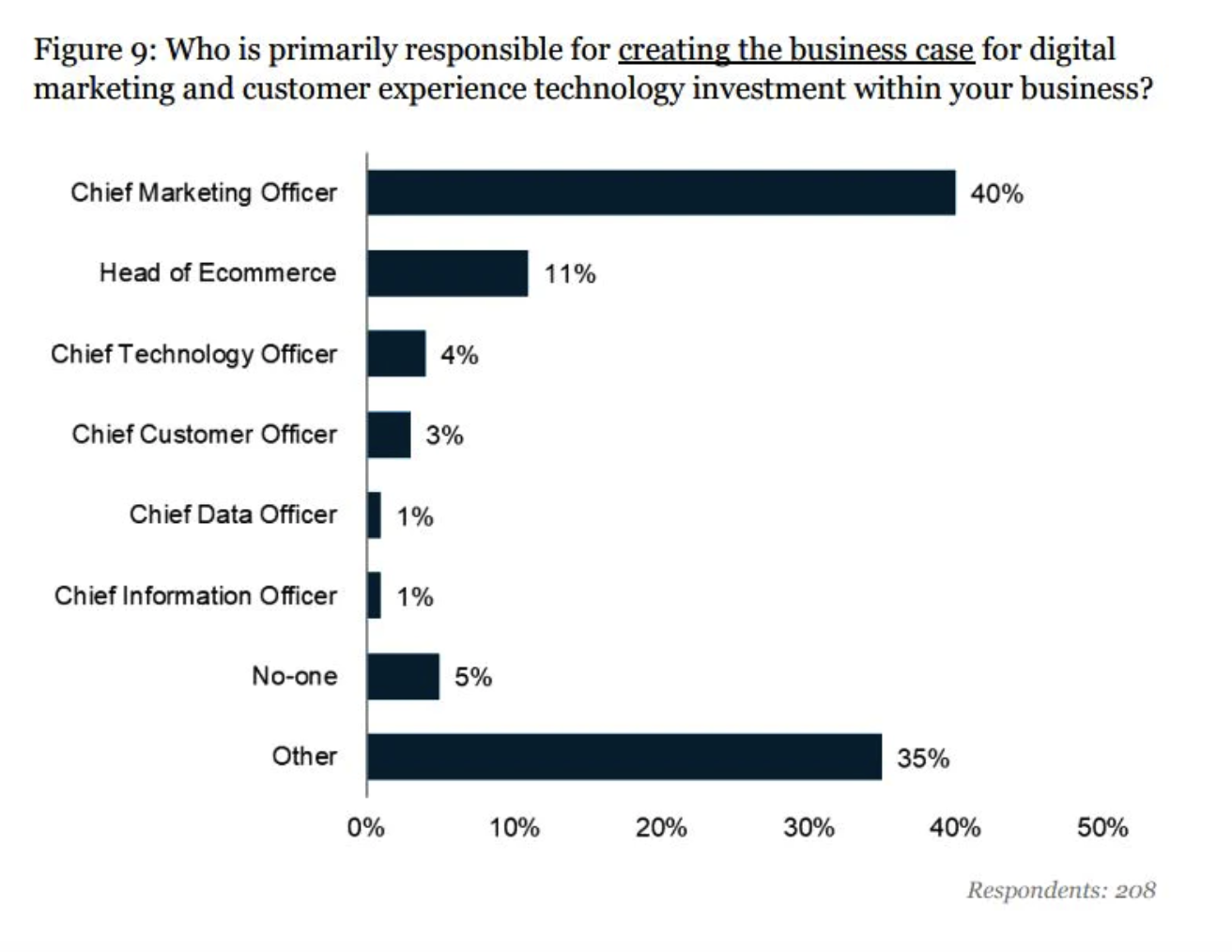The phrase Customer Experience (CX) didn’t become en vogue until 2008 when it surpassed Customer Satisfaction as the primary customer-focused keyword.
Rather than just satisfaction, customer experience refers to the whole ecosystem of the customer journey. From the first experience, customers have with your website, to the last time they pay you—it’s all encompassed under the large umbrella of experience.
Similarly, instead of just focusing on the customer’s interactions with support, CX covers how they interact with marketing, sales, and any other customer-facing aspects of your company. It’s much more holistic than customer satisfaction, which just gauges how happy a customer feels with a product or service.
Since 2008, customer experience has burgeoned and become a key element at many companies. In fact, a Walker study found that by 2020, customer experience will overtake both price and product as the key brand differentiator.
But, many companies are still struggling with the best way to implement CX within their organization—a struggle that’s scary given that, at this point, 67% of customers say that their expectations are higher now than they have ever been.
How can companies overcome traditional issues with customer experience while still moving in the right direction toward CX excellence? In this post, we’ll explore the top four traps most organizations fall into, and how to overcome them.
Data accessibility
Many companies struggle with data organization—and that assumes that all companies even have access to data from all aspects of the company.
The truth of the matter is that most businesses don’t have access to the data that they need, and even if they do, 95% of surveyed businesses need to do a better job managing their unstructured data.
How can you improve something if you don’t have access to the current data? It’s like trying to give your friend directions to your favorite restaurant in a big city where you lived a decade ago but haven’t visited since. A lack of data is one of the most limiting things that teams can experience when it comes to innovating customer experience.
Similarly, without the right data, you never know if you’re getting better: 57% of people report being unsure or not having enough knowledge of what to measure in order to indicate their customer experience strategy is getting better.
Having everything in one place makes it easier to understand what is important and what isn’t compelling or informative.
How to fix it?
Integrations are a blessing. Try to find a place where you can store all of your data, and then use tools to integrate your software and get everything into one place. That will allow you to see the correlations of different metrics.
For example, when response time to your ticket goes down, does customer satisfaction go up? Being able to view everything in one place will give you much more oversight into what needs changing.
Little company investment
Despite the fact that 80% of companies aspire to be leaders in customer experience, currently only one in five is delivering great (or even good) experiences, according to their customers.
Oftentimes, this is because it can be difficult to get momentum behind initiatives that require more effort to prove the ROI. It’s possible, but it’s not as cut and dry as other business propositions.
Also, when asked why CX was so hard to get investment for, 48% of people surveyed cited “lack of understanding and sponsorship” as being a significant issue. So, it’s not that companies don’t want to move forward with CX strategy, it’s that they don’t know how to.
How to fix it?
Data is a language that everyone understands. Once you’ve got all of your data in one place, you can use it to tell a compelling story about why CX strategy is important to invest in.
Use quantitative metrics to encourage your company to understand the direct impact that things like customer loyalty and customer experience have on organizational metrics like churn and recurring revenue. (Spoiler alert: we’re working on a guide on how to do this, so stay tuned!)
Designating ownership is another important and valuable step towards gaining traction within your company. Take, for example, this survey response about who should own customer experience:
Yikes! 35% of people voted “other,” which is basically just like passing off the responsibility into the ether.
Set a specific person to own your business processes around CX, and ensure that they have the data needed to make cases for any improvements or strategies to push forward CX within your team.
Outdated documentation
It turns out that 70% of all customers would prefer to find their answer on a company’s website, rather than reaching out via email or phone. It makes sense, right?
People want to feel empowered, rather than hung up waiting for an answer on a timeline that they don’t have insight into.
Unfortunately, though, the challenges associated with searching for or through documentation actually account for 21.3% of productivity loss. How many times have you found a doc that you think answers your questions only to discover that all of the images are out of date, or the text refers to a feature that no longer exists?
Think about it. It happens more often than you might think.
The fact is that: keeping documentation up to date is tricky. Products are perpetually changing, and there is always some kind of A/B test going on that makes it difficult to ensure that everyone is seeing the same thing.
However, given that good documentation is key for both customer experience and deflecting tickets away from the inbox, it’s a good thing to put some resources into.
How to fix it?
This is a problem that is easiest to solve with another piece of software. Some help desks have this automatically built into their knowledge base functionality. If you are not so lucky but have engineering resources at your fingertips, you could custom-build a documentation review system by surfacing all documents that haven’t been reviewed in the past few months.
Or, as a last resort, you can use a spreadsheet to keep track of all your articles that need to be reviewed. That being said, there are many standalone knowledge-base management platforms that have this ability built-in, so if you’re comfortable adding another software to your arsenal, it might be a good route. If you’re curious about which ones might work best for your situation, softwareadvice.com has a great, peer-reviewed list.
Outdated tools
AI, bots, customer sentiment and a number of other neat functionalities can help boost customer experience—if they’re given the opportunity. Surprisingly, only 19% of companies globally have tried a new tool in the past five years. A majority of teams are using old, outdated tools that don’t reflect the myriad of amazing advances we’ve made in technology over the past half-decade.
There are so many interesting and innovative things that companies are doing nowadays to benefit their customers—oftentimes thinking hugely outside of the box. While you don’t need to do everything totally fresh and new, it can help to shake up your customer expectations. Trying exciting things differentiates what you offer from what everyone else offers. So, what’s the best way to look outside of your comfort zone for new tools?
How to fix it
Find blogs, websites or communities that you trust with customer experience. Subscribe where you can and, instead of having to seek out all of the new and innovative products, they can come to you.
Read the weekly emails, the recaps in the communities, or any new and hot news that pops up on your websites of choice. If something sounds attractive, don’t be afraid to ask for a demo, or look into the logistics of what implementation would look like.
Remember: you don’t have to move forward with everything you learn about, but at least keep yourself abreast of trends and try them out.
Conclusion
Customer experience is only a little over a decade in the making, and already there are so many new and exciting things happening. However, with new things comes the problem of being able to keep up.
Keeping your team on top of data and making sure that everyone knows what’s happening with your CX experience gives everyone within the company insight into how valuable (or invaluable) what you’re offering is. It also gives you metrics to better understand how you’re performing and uncover areas where new tooling or functionality might help you deliver an even better experience. New things don’t have to be scary!
Ride the wave of innovation while making sure you keep your thumb on the pulse of how you’re doing. Your CX will become a key differentiator for you in no time.
Want to know what else we have to say about customer experience? Check out: An Article on CX That Actually Makes Sense. If you’re interested in learning more about customer loyalty, the free guide below is a perfect starting point.
Guide to Boosting Customer Loyalty
Learn how to use customer loyalty metrics (NPS, CES, and CSAT) to improve customer experience and increase retention rates.

